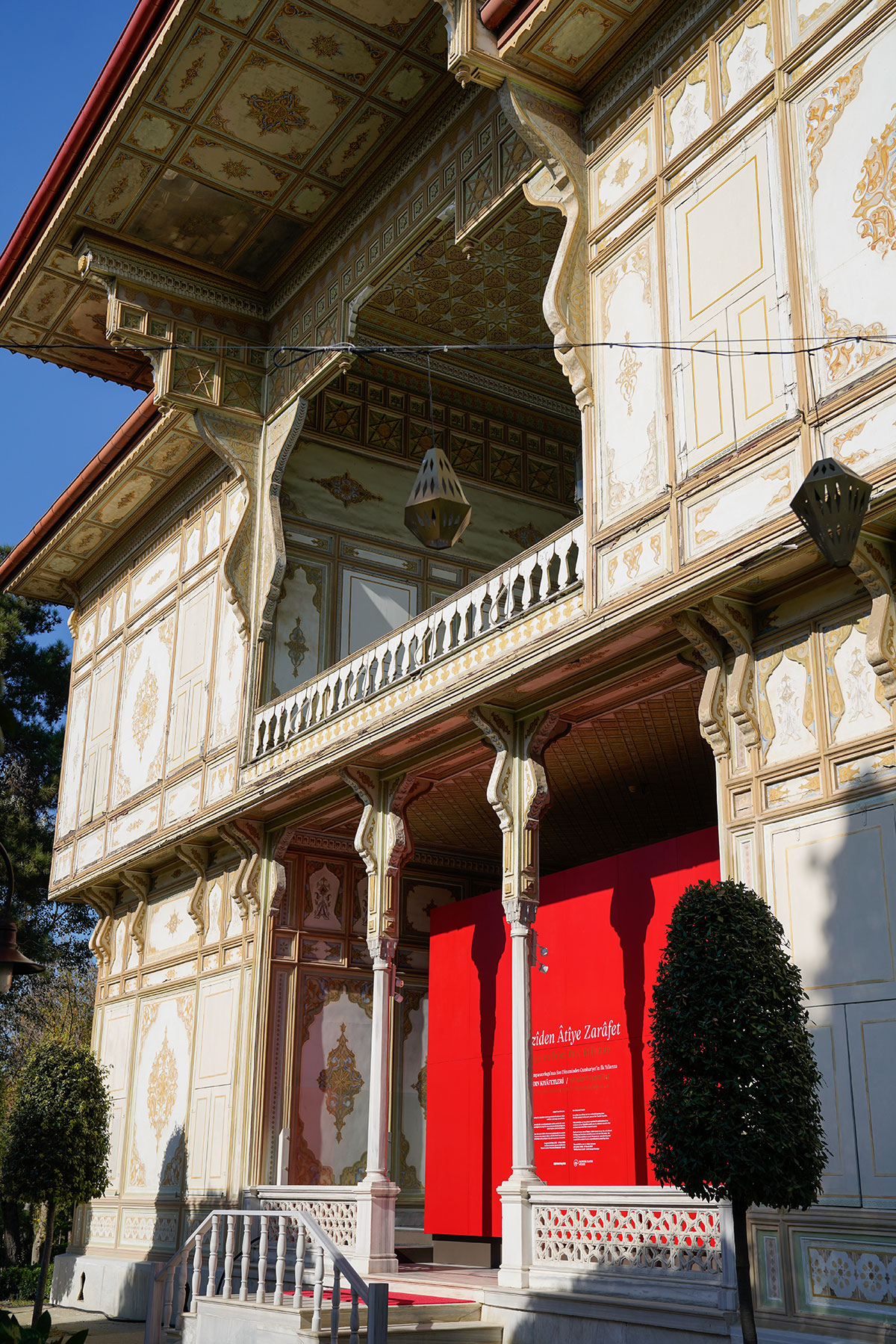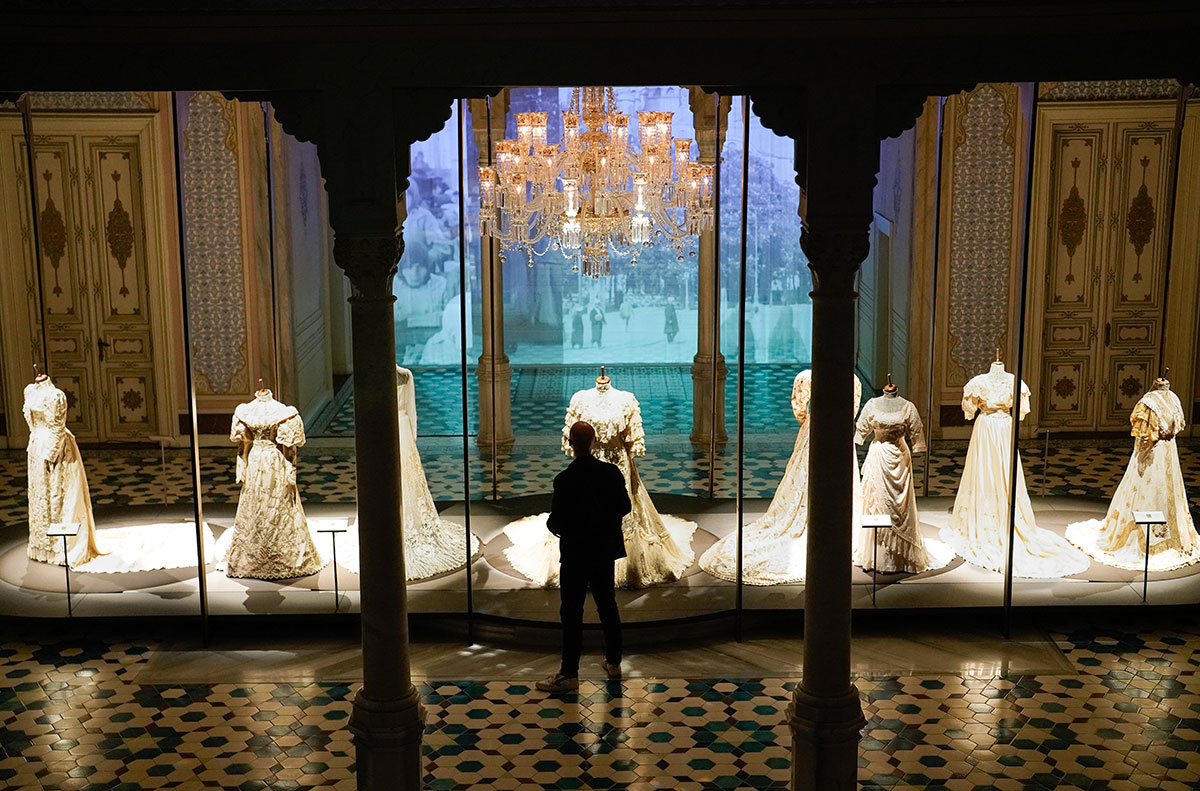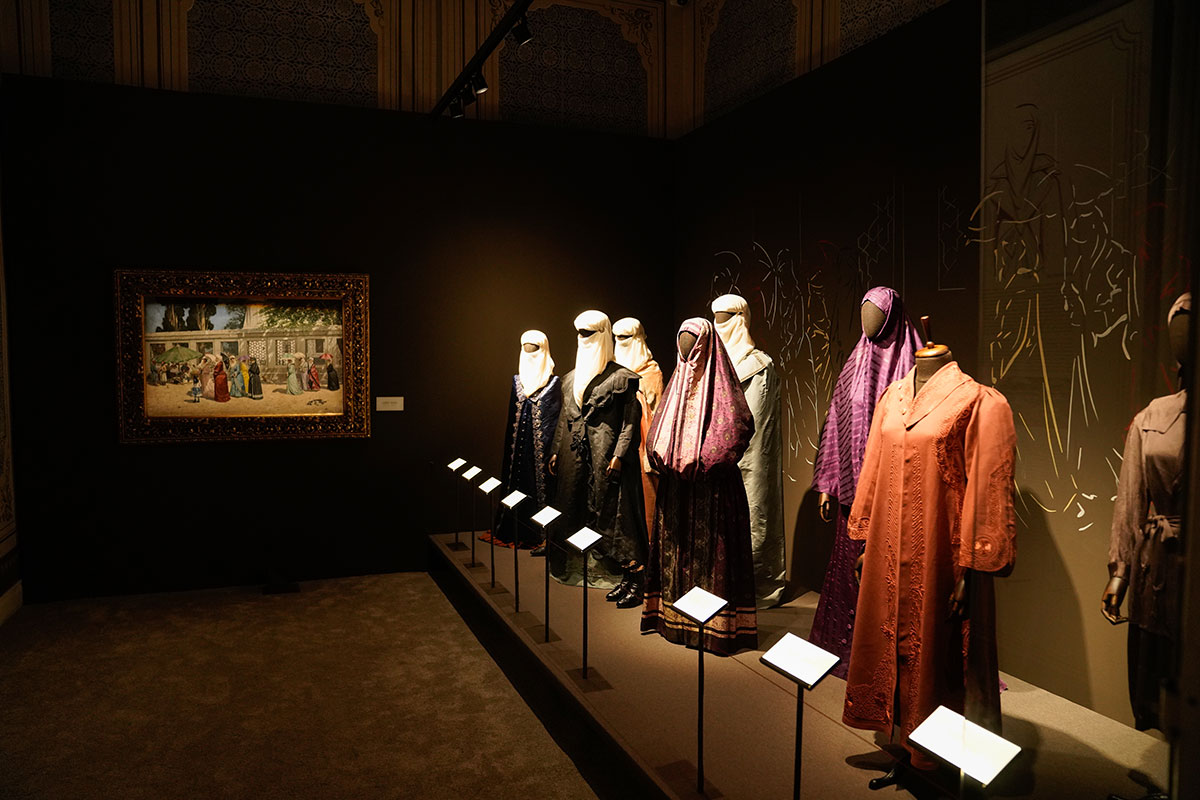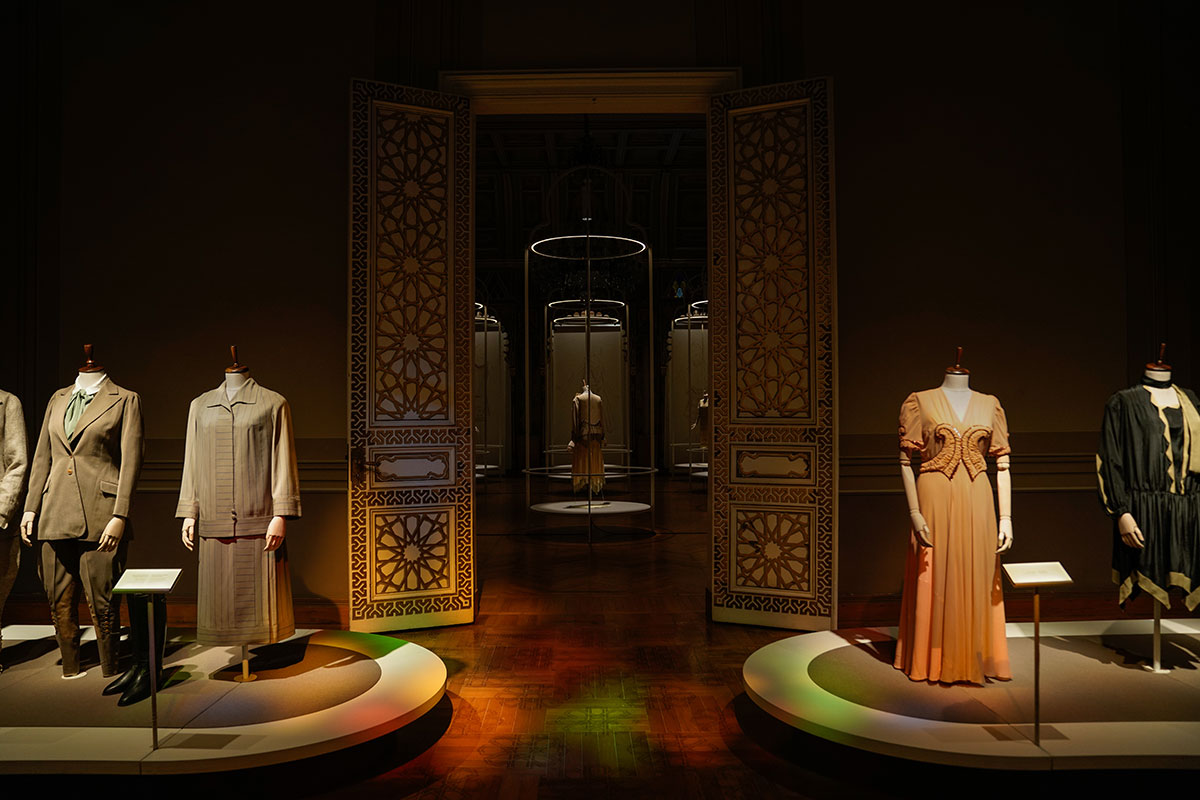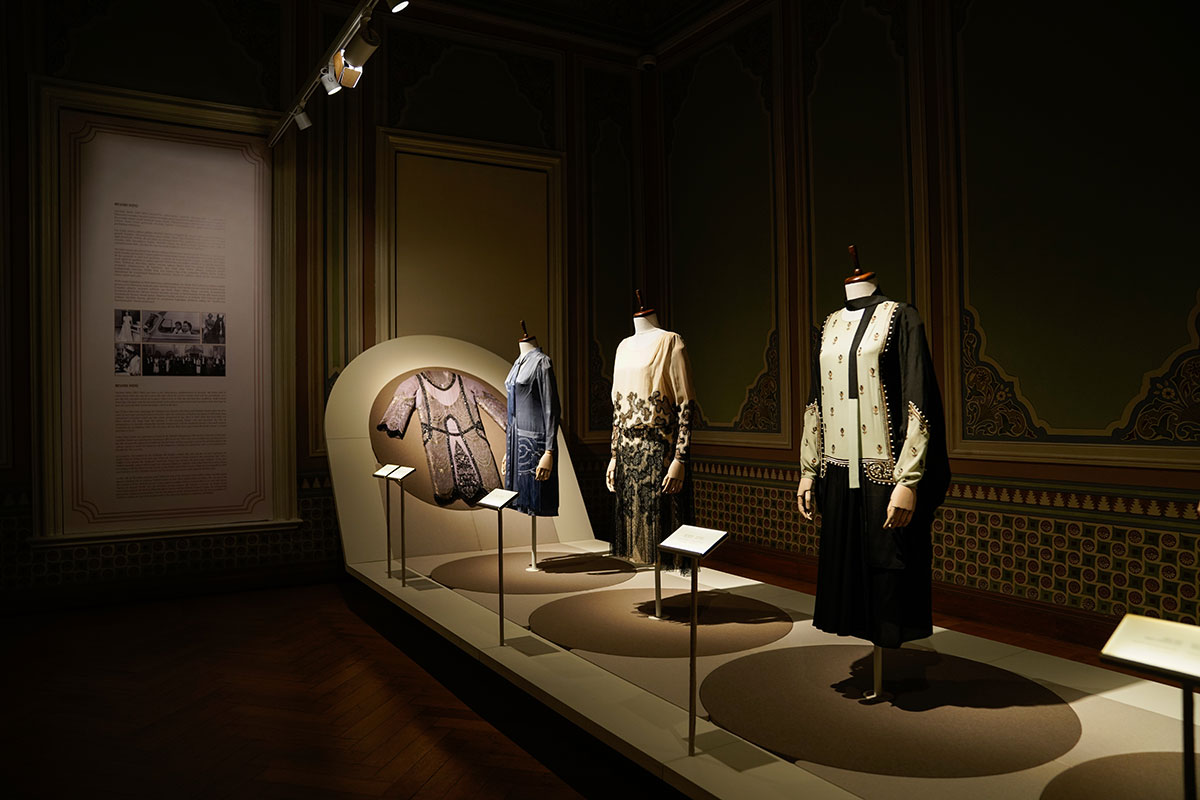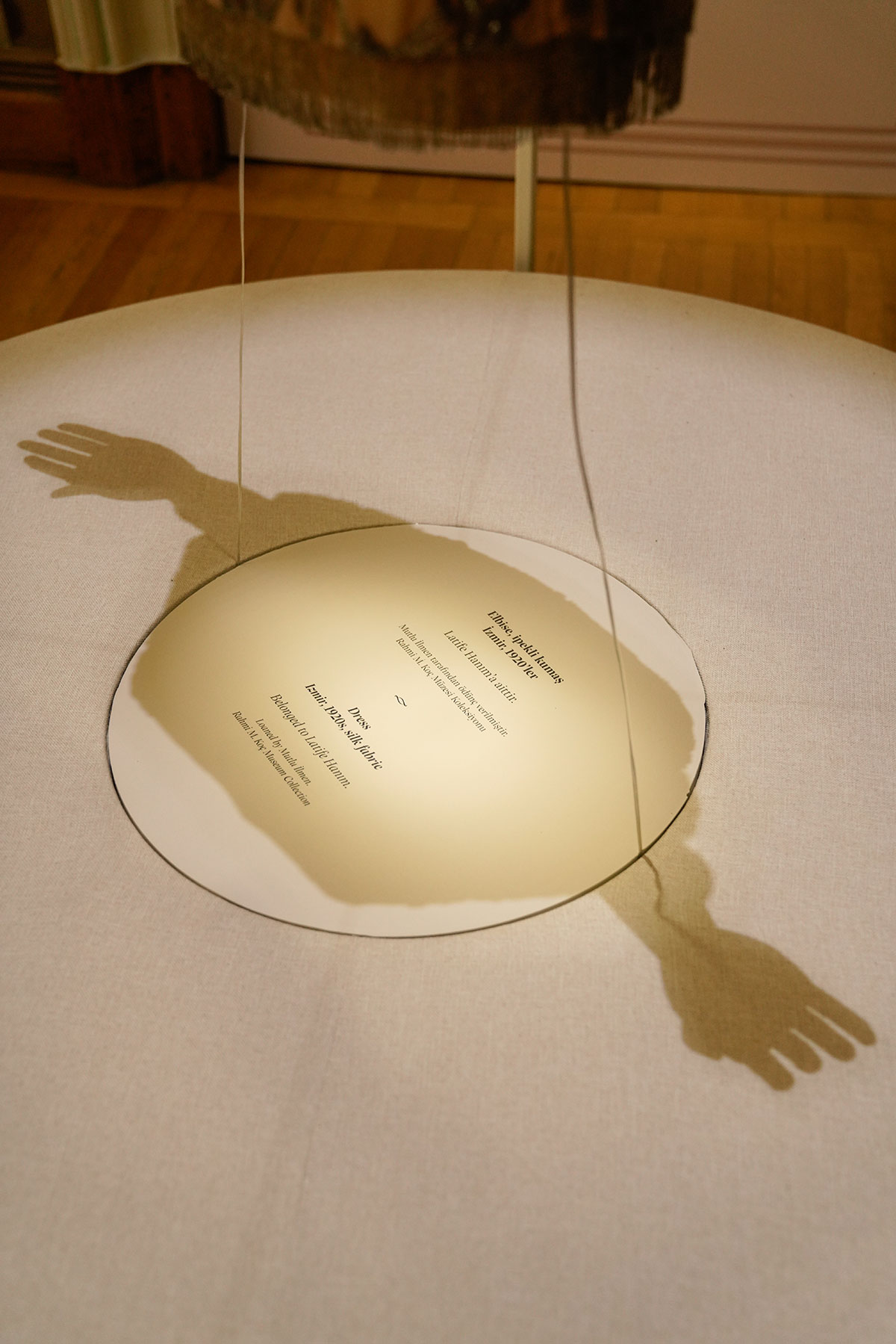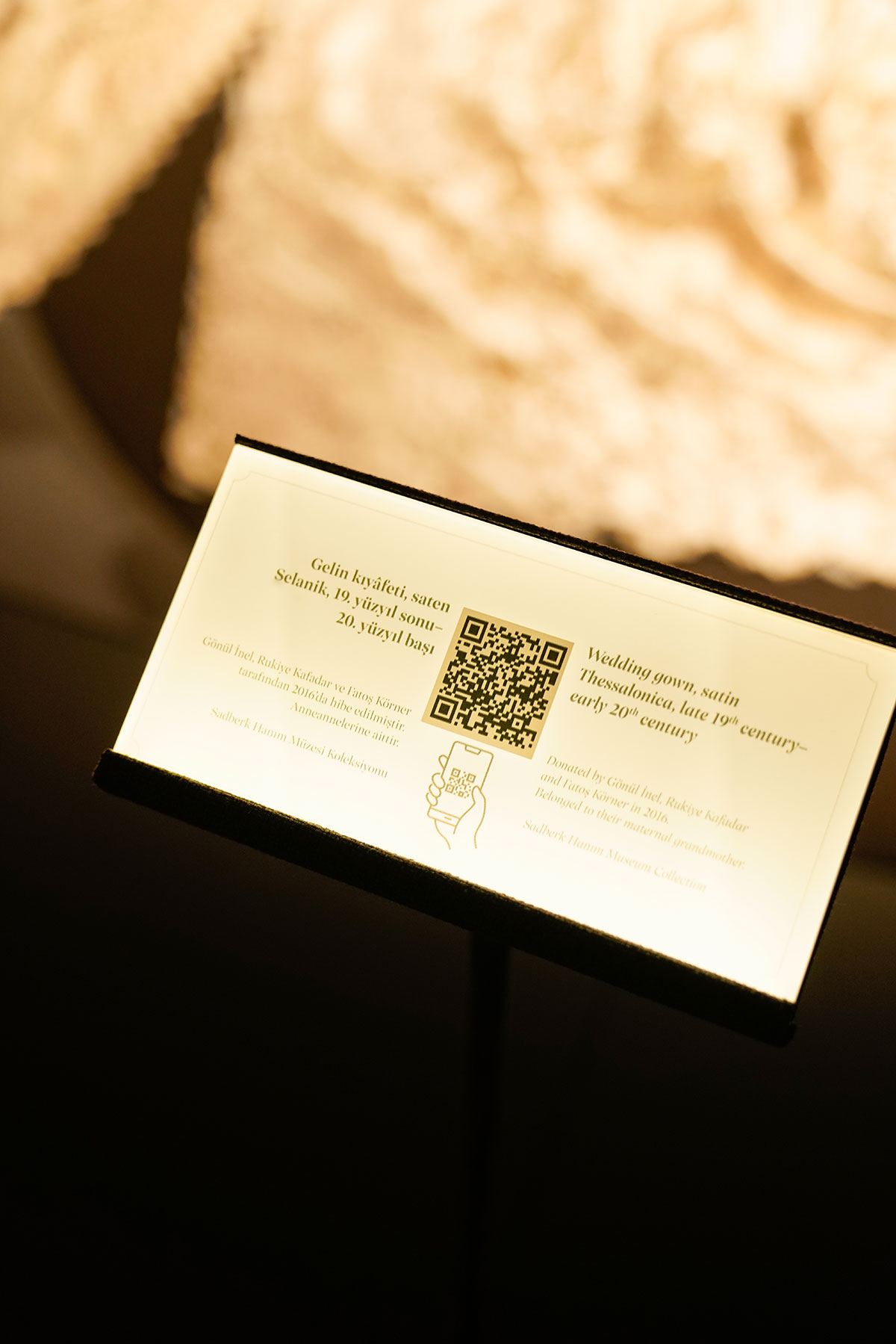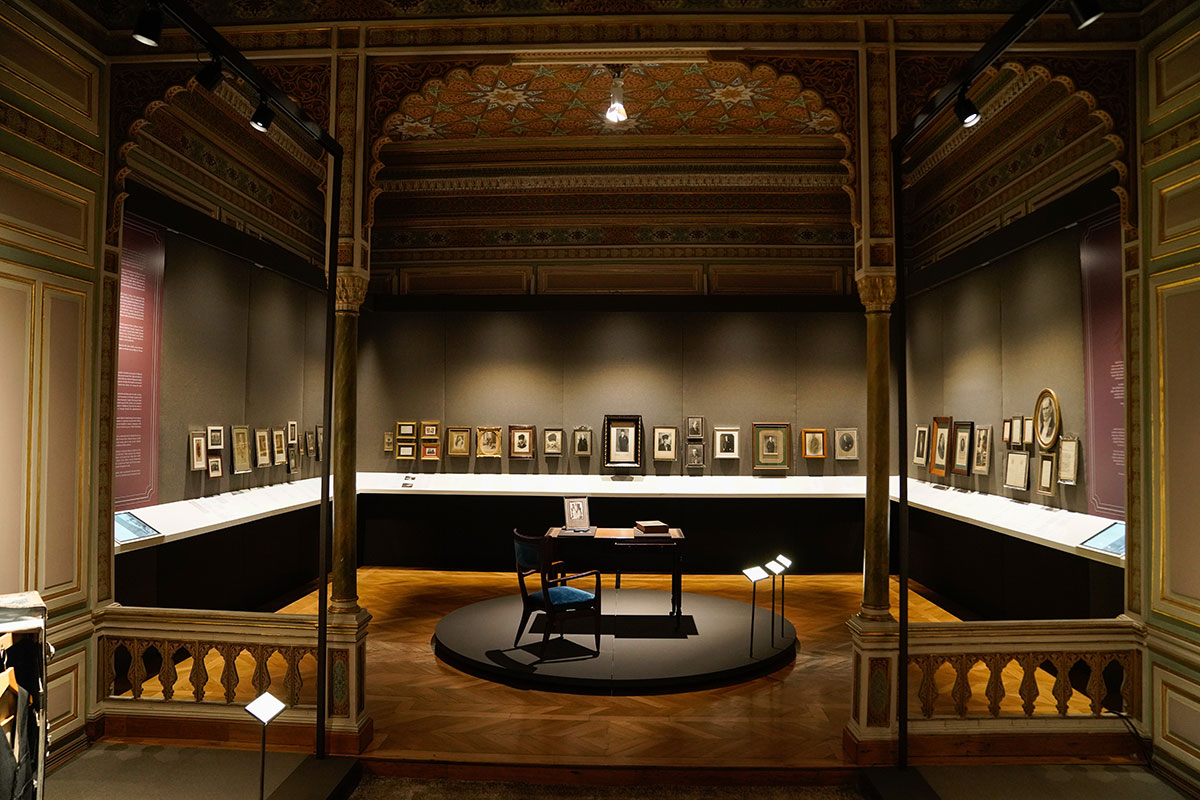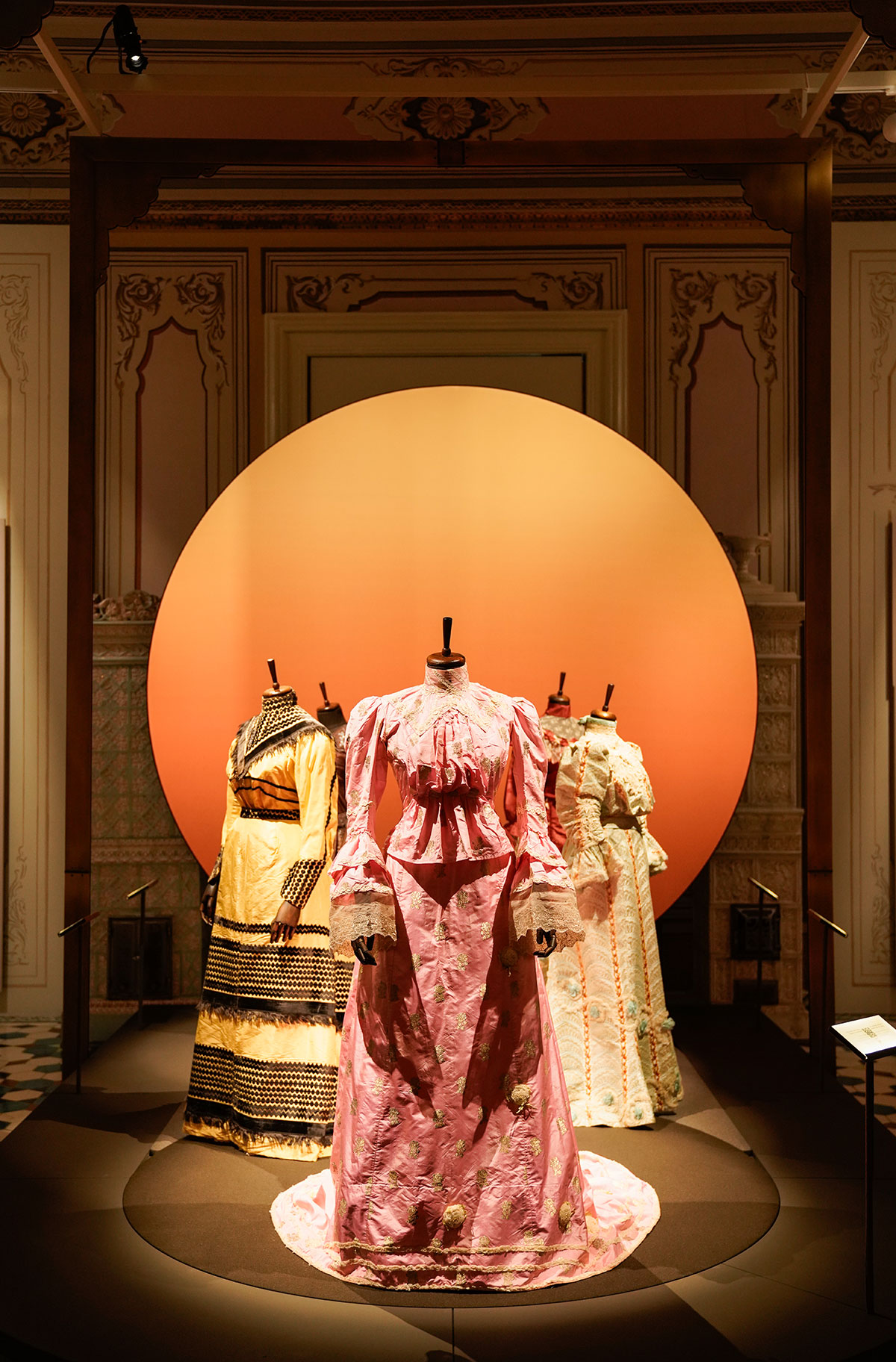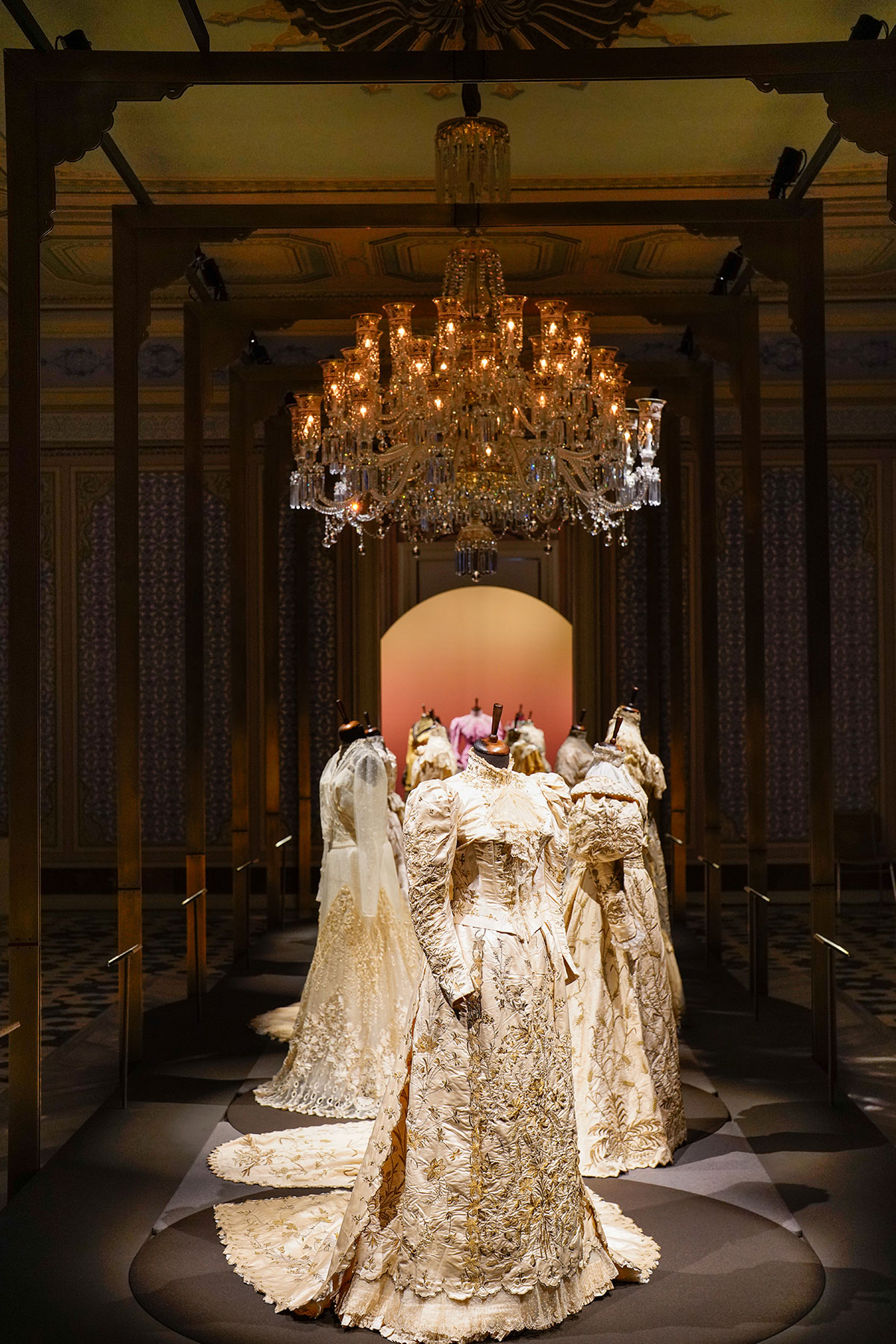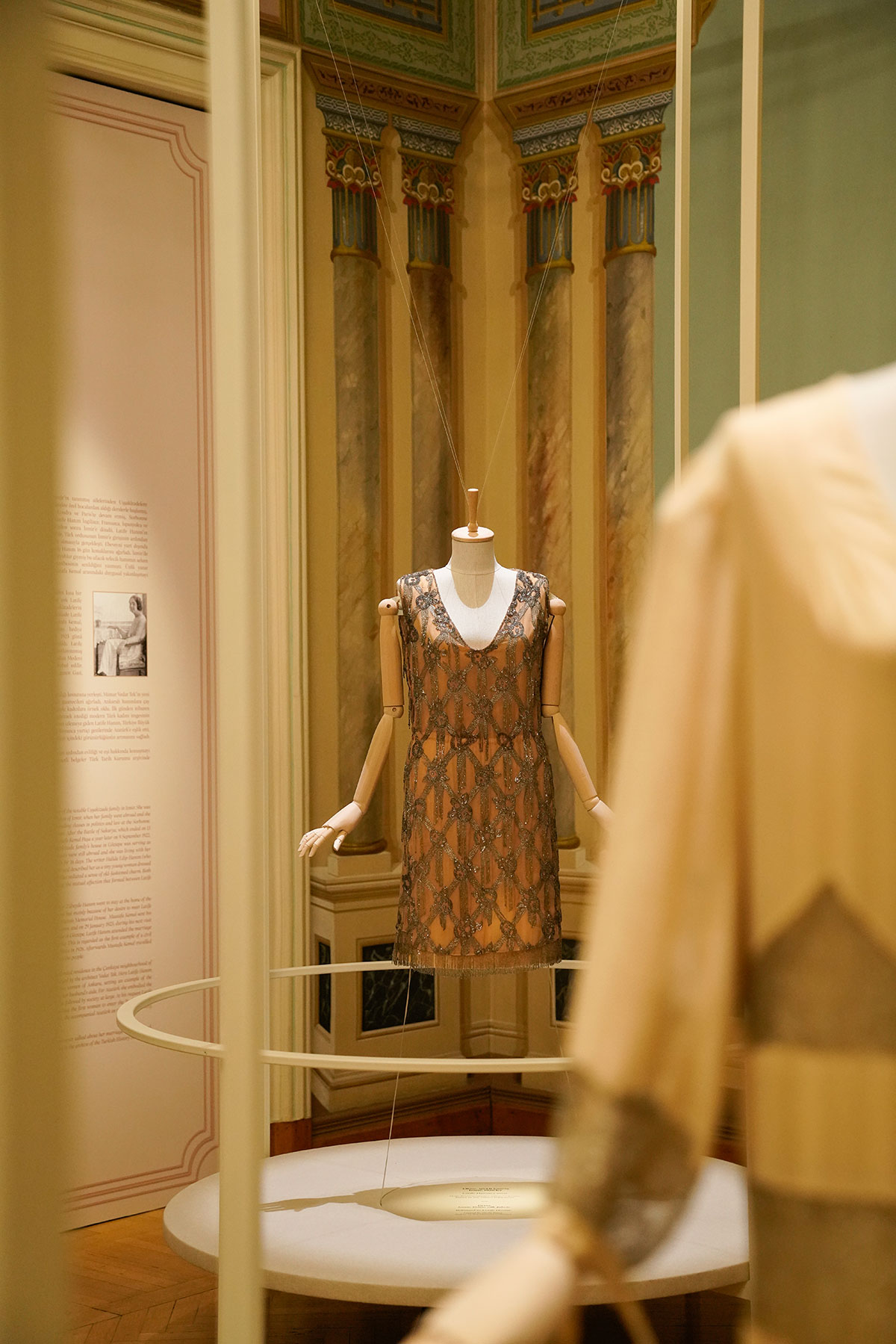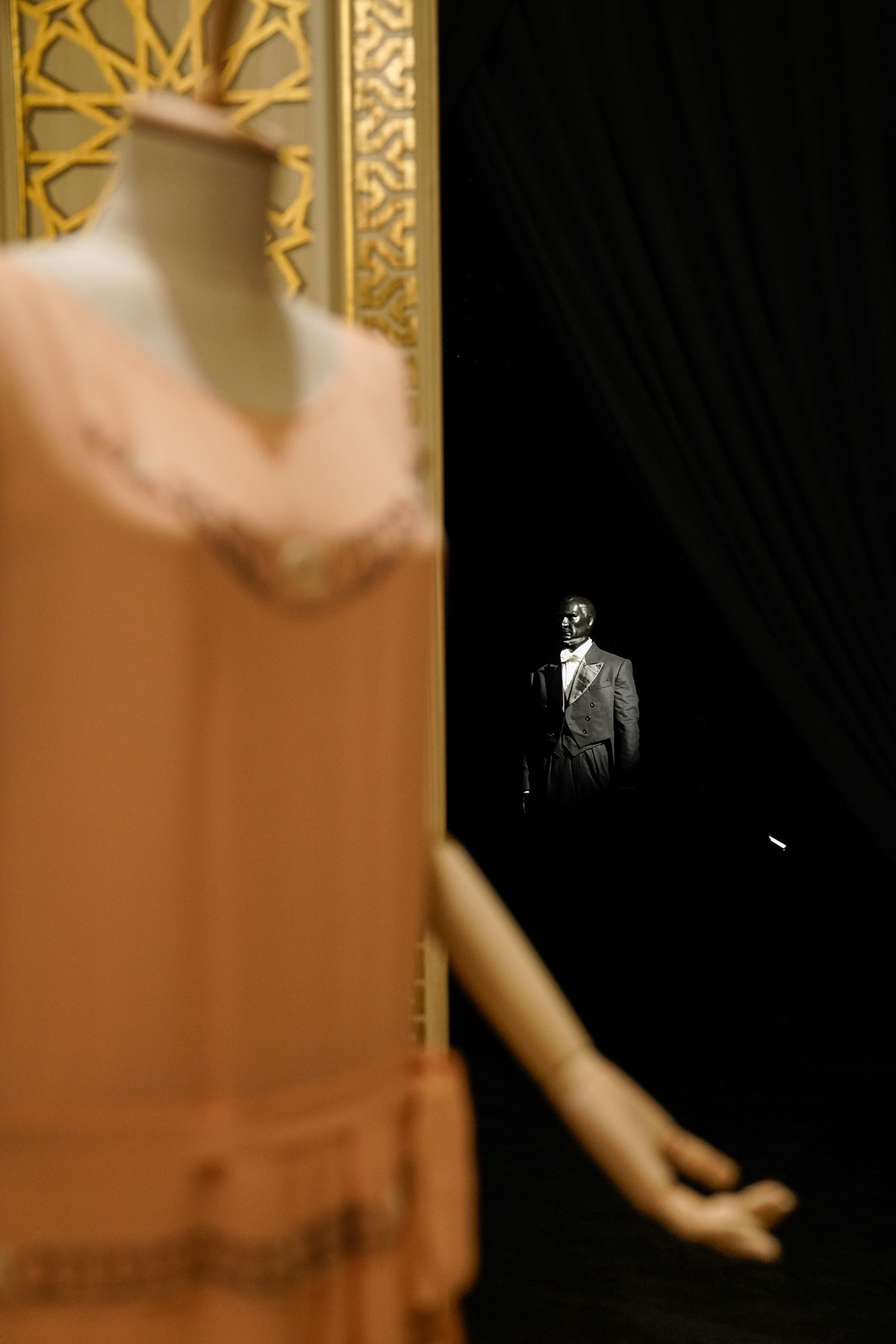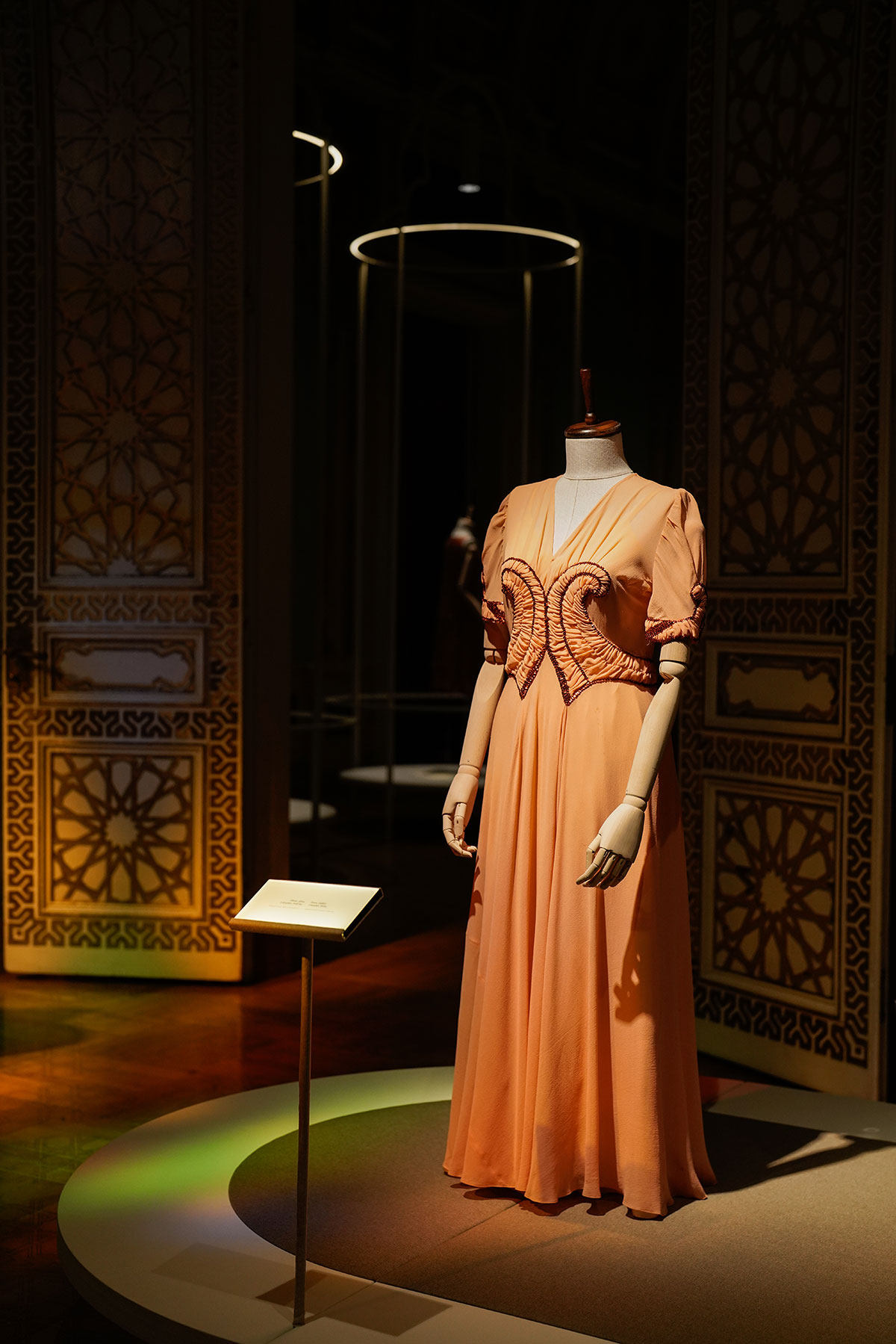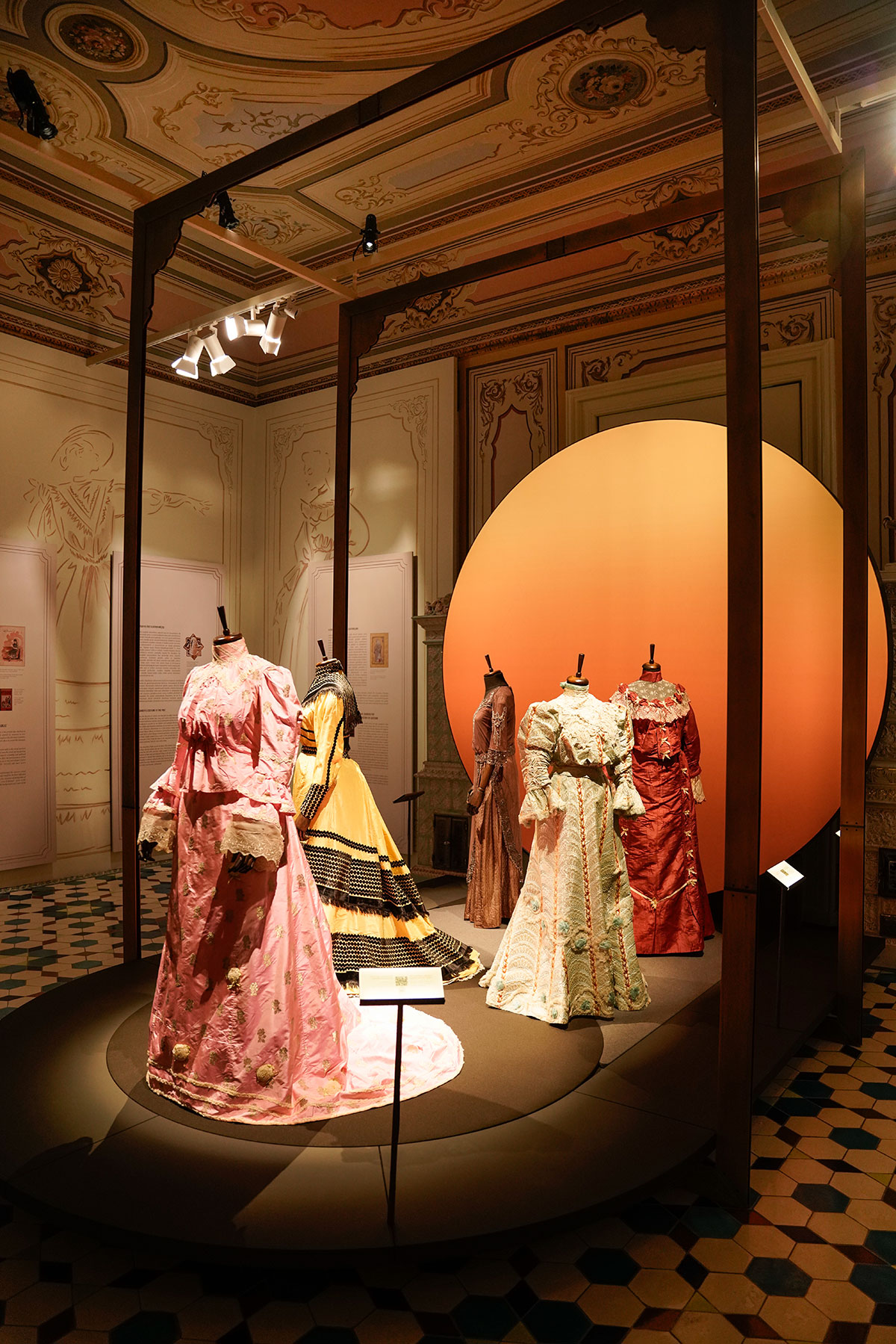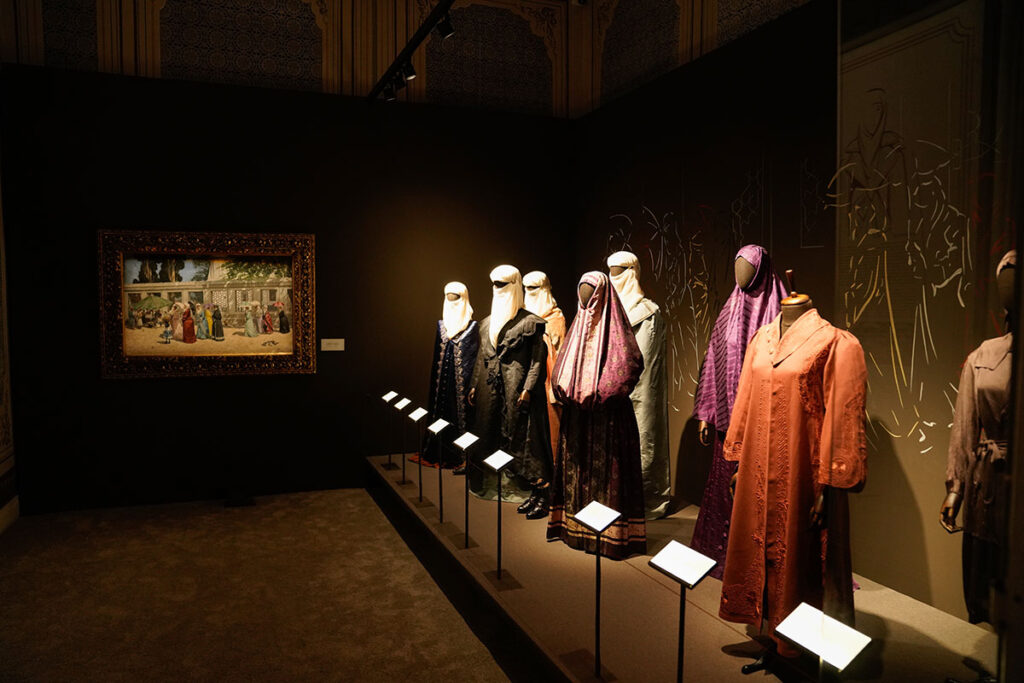

Elegance from Past to Future*
Abdülmecid Efendi Mansion
 The “Elegance from Past to Future” exhibition focuses on the transformation in costume that began when palace and urban women began to follow European fashions in the 19th century and gathered momentum with the proclamation of the Republic. This process is examined against the background of women’s changing role in modern life and the rights they gained.
The “Elegance from Past to Future” exhibition focuses on the transformation in costume that began when palace and urban women began to follow European fashions in the 19th century and gathered momentum with the proclamation of the Republic. This process is examined against the background of women’s changing role in modern life and the rights they gained.
Fashion history is not confined to garments themselves but can also be interpreted in terms of changes in lifestyle and their social consequences. Radical changes took place in costume during the last century of the Ottoman Empire and the early years of the Turkish Republic. So one aspect of the “Elegance from Past to Future” exhibition is the way it reflects the role of women in society and how that role underwent increasing change. Women who had been granted equal rights under the new Civil Code and had modern educational opportunities wished to express their identities through their dress, and in this way became mirrors of modernisation in Turkey.
The “Elegance from Past to Future” exhibition sets out to represent not only how women were dressing in Istanbul and Ankara—the old and new capitals respectively—but the milieu in which they were living. In allusion to the centenary of the Republic, 100 objects are featured in the exhibition, which consists of bridal outfits, special occasion and evening wear, outdoor wear, riding outfits, bags, shoes and accessories such as umbrellas. Exhibits also includes an oil painting by Osman Hamdi Bey that illustrates fashionable outdoor wear in the late Ottoman period. Entitled Women out Walking, the painting belongs to the Yapı Kredi Bankası Collection.
The exhibition venue is the former summer home of Abdülmecid Efendi, the son of Sultan Abdülaziz. The house is situated in Nakkaştepe, at the foot of Çamlıca Hill on the Asian shore of Istanbul. Originally built as a hunting lodge and country home by the khedive of Egypt İsmail Paşa in the 1880s, it was later purchased by Sultan Abdülhamid II and allocated to his cousin Abdülmecid Efendi, after whom the house is named today. Caliph Abdülmecid Efendi lived here during the summer months and held gatherings of artists and writers. It is a rare example of vernacular architecture that has been preserved in its original form.
Visitors entering the building pass through a red curtain hanging over the doorway. The moment they set foot in the entrance hall they encounter upper class Ottoman women dressed with superb elegance, as they would have looked in their palaces and houses. The first exhibit is the wedding dress belonging to Şehsuvar Hanım, the wife of Abdülmecid Efendi, followed by a series of resplendent wedding outfits that reveal the influence of European fashion. The next room is devoted to costumes worn by women at palace gatherings and other special occasions, accompanied by music with rhythms inspired by classical Turkish music and images on a long reflective surface that recreate the atmosphere of the time.
As reforms gathered momentum in the 19th century, the Ottoman elite began to imitate European manners and customs, and this is clearly visible in women’s fashion. Women of the Ottoman royal family were among the first “modern” women to select designs from European fashion magazines for their dressmakers to copy. All these magnificent garments were made of expensive silk fabrics by French dressmaking ateliers in Cairo or Greek dressmakers in Istanbul, as we know from their labels. The foremost source of information about costume in the late Ottoman period is the autobiography of the poet and composer Leyla Saz, so it is a delightful surprise to see one of her palace outfits, with the insignia of a decoration presented to her by the sultan, and her harmonium. Songs for which she wrote both the music and lyrics play in the background. In another part of this section visitors can see examples of feraces and çarşafs worn by Istanbul women when visiting parks such as Göksu and Sâdâbâd, or out walking in Sultanahmet Square, as depicted in Osman Hamdi Bey’s painting. These examples reflect the changes in fashion and the position of women in society that were taking place at this period.
The upper floor is devoted to charleston style garments of the 1920s and ensembles worn in the years following the proclamation of the Republic. As on the ground floor, the route begins at the heart of the building and carries visitors first to a re-creation of a Republican Ball, where fashionably dressed women are dancing to music of the era. In this section the most elegant outfits are two belonging to Atatürk’s wife Latife Hanım. In the next section are outfits worn by Mevhibe İnönü and Afet İnan at receptions and other special occasions. Clothes worn by women who represented modern Turkish women in the eyes of the world, who attended receptions given in honour of foreign statesmen, who gave talks on the subject of women’s suffrage, and who were free to ride horses and engage in other sports, reflect the new ideals disseminated from Ankara. Nine outfits as well as bags and shoes belonging to Mevhibe İnönü have been loaned by the İnönü Foundation and brought to Istanbul from the İnönü’s home in Ankara. One of the most interesting outfits in the exhibition was designed by Mustafa Kemal himself for his adopted daughter Afet İnan to wear when she was giving a public lecture.
A special section is devoted to founder of the Republic, Mustafa Kemal Atatürk. This section has been curated by Bahattin Öztunçay and includes signed photographs of Atatürk from the Ömer M. Koç Collection and garments and personal possessions from the Sadberk Hanım Museum and Rahmi M. Koç Museum collections. In this last and evocative section visitors can see an exact replica of Atatürk’s tailcoat, which is preserved in Anıtkabir Museum in Ankara, made by the Beylerbeyi Sabancı Domestic Science Institute in Istanbul.he “Elegance from Past to Future” exhibition focuses on the transformation in costume that began when palace and urban women began to follow European fashions in the 19th century and gathered momentum with the proclamation of the Republic. This process is examined against the background of women’s changing role in modern life and the rights they gained.
Fashion history is not confined to garments themselves but can also be interpreted in terms of changes in lifestyle and their social consequences. Radical changes took place in costume during the last century of the Ottoman Empire and the early years of the Turkish Republic. So one aspect of the “Elegance from Past to Future” exhibition is the way it reflects the role of women in society and how that role underwent increasing change. Women who had been granted equal rights under the new Civil Code and had modern educational opportunities wished to express their identities through their dress, and in this way became mirrors of modernisation in Turkey.
*Winner for 2024 IF Design “Cultural Exhibitons” category
• Exhibition Design
• Creative Direction
• Lighting Design
• Execution




